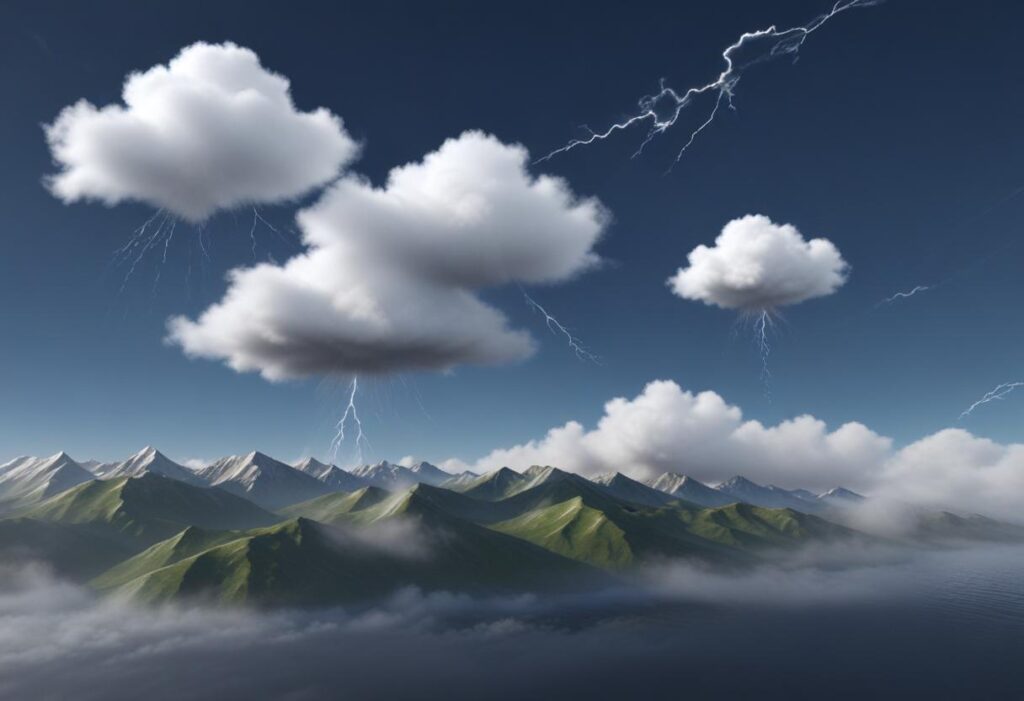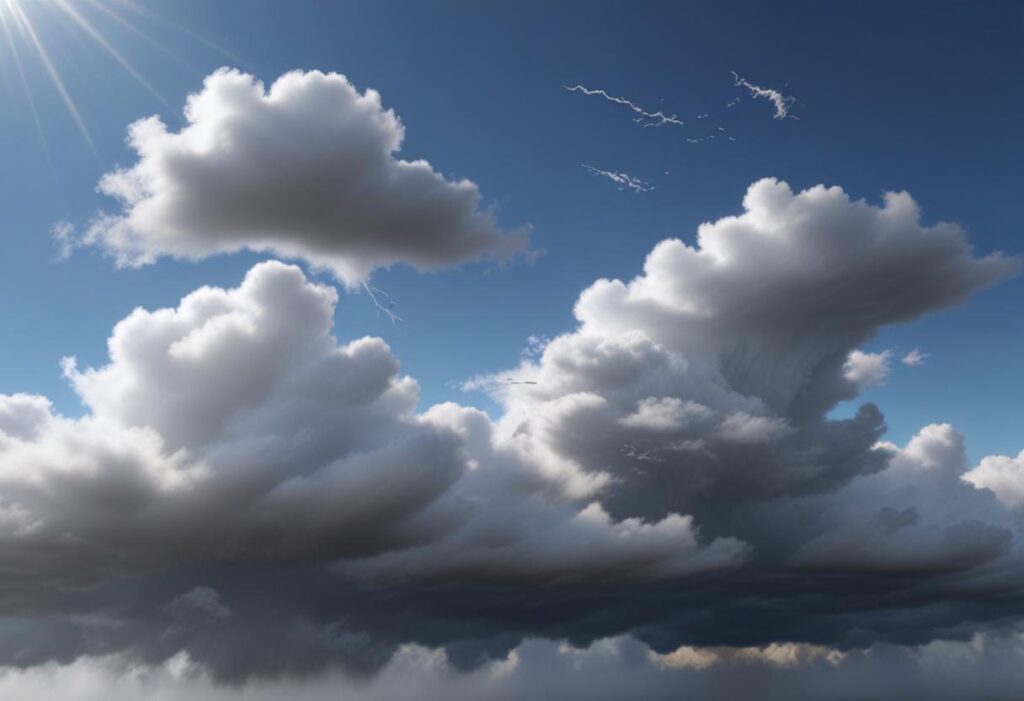We talk about the weather daily, but how much do we really understand it? Weather refers to the day-to-day conditions of the atmosphere, including temperature, humidity, precipitation, and wind. It plays a massive role in our lives, influencing what we wear, where we travel, and how our environment evolves. Yet, many people overlook the science and significance behind the changing skies. Let’s take a deeper dive into the fascinating world of weather.

The Elements of Weather
Temperature
Temperature is arguably the most noticeable aspect of the weather. It influences what we wear, how we feel, and even our mood. Temperatures can vary dramatically between day and night or from one season to another. These variations depend on the sun’s angle and duration of daylight in any given location.
Humidity
Humidity measures the amount of moisture in the air. When the air is humid, it feels sticky and warm. Dry air, on the other hand, can make hot temperatures more bearable. Humidity levels significantly affect weather patterns and human comfort, playing a key role in rainfall and storm formation.
Precipitation
Precipitation includes all forms of water—rain, snow, sleet, or hail—that fall from the atmosphere to the Earth’s surface. It’s a critical component of the water cycle and directly affects ecosystems, agriculture, and daily life.
Wind
Wind is the movement of air from high-pressure to low-pressure areas. It can range from a light breeze to powerful gusts during storms. Wind plays an essential role in weather patterns by redistributing heat and moisture across the globe.
Atmospheric Pressure
Atmospheric pressure refers to the weight of the air above a specific point. High-pressure systems usually bring clear skies, while low-pressure systems are associated with storms and rainfall. Measuring pressure is key to predicting upcoming weather.
How Weather is Measured
Accurate weather measurement is crucial for forecasting and preparation. Meteorologists rely on various instruments to monitor weather conditions.

Weather Stations
Weather stations collect data on temperature, humidity, wind speed, and atmospheric pressure. These stations are distributed globally, ensuring accurate readings from different regions.
Meteorological Instruments
- Thermometer: Measures temperature.
- Barometer: Measures atmospheric pressure.
- Anemometer: Measures wind speed.
- Hygrometer: Measures humidity.
Each of these instruments provides critical data to predict weather patterns effectively.
Types of Weather Patterns
Weather comes in many forms, from calm, sunny days to turbulent storms. Understanding these patterns helps us adapt to our environment.
Clear Skies
Clear skies are often associated with high-pressure systems and bring dry, sunny weather. These days are perfect for outdoor activities and tend to offer a break from stormy conditions.
Cloudy Weather
Cloud cover occurs when moisture in the air condenses to form clouds. Depending on the type and thickness of the clouds, this weather may bring mild temperatures or lead to rain or storms.
Rainy Days
Rain is a vital part of the water cycle, but excessive rainfall can cause flooding. Rainy weather is influenced by low-pressure systems that draw in moist air from surrounding areas.
Snowfall and Winter Conditions
Snow occurs when the air temperature is below freezing, causing moisture to freeze and fall as snowflakes. Snowstorms can disrupt daily life, especially in regions unaccustomed to severe winter conditions.
Storms and Extreme Weather
Thunderstorms, tornadoes, and hurricanes are all extreme weather conditions that can cause significant damage. These phenomena occur when warm, moist air collides with cold air, creating unstable atmospheric conditions.

The Science of Meteorology
What is Meteorology?
Meteorology is the science that studies the atmosphere and its phenomena. It focuses on understanding weather patterns, climate trends, and how the atmosphere interacts with other Earth systems.
The Role of Meteorologists
Meteorologists analyze data from satellites, radar, and weather stations to predict the weather. They interpret complex atmospheric signals and communicate their findings to the public.
How Weather Forecasts are Made
Weather forecasting involves using computer models to simulate the atmosphere. Meteorologists input data like temperature, humidity, and wind patterns to predict future weather conditions. While technology has advanced, forecasting can still be unpredictable due to the atmosphere’s complexity.
Weather vs. Climate: What’s the Difference?
Though people often confuse them, weather and climate are distinct concepts.
Short-term vs Long-term Atmospheric Conditions
Weather refers to short-term atmospheric changes, while climate is the average weather pattern over an extended period, typically 30 years or more. For example, a rainy day in Los Angeles is weather, but the region’s overall dry nature is part of its climate.
Why People Confuse Weather and Climate
Since weather can vary greatly from day to day, it’s easy to misunderstand long-term climate trends. However, understanding the difference helps us grasp the broader impacts of climate change on daily weather patterns.
How Global Factors Affect Weather
The Earth’s Rotation and Tilt
The Earth’s rotation and tilt are responsible for the seasons and varying weather patterns across different latitudes. This tilt causes changes in sunlight, leading to temperature variations.

Ocean Currents
Ocean currents redistribute heat around the globe, influencing weather patterns. Warm currents can bring mild temperatures to coastal areas, while cold currents have the opposite effect.
The Jet Stream
The jet stream is a fast-flowing air current in the upper atmosphere that influences weather patterns. Its position and speed can lead to extreme weather events.
El Niño and La Niña Phenomena
El Niño and La Niña are complex weather patterns caused by ocean temperatures. These phenomena can trigger droughts, heavy rainfall, and storms in various parts of the world.
How Weather Impacts the Environment
Effects on Agriculture
Weather significantly affects crop production. Droughts, floods, and storms can destroy crops, while favorable weather promotes growth.
Wildlife and Ecosystem Adaptations
Animals and ecosystems are deeply affected by weather. Many species migrate or hibernate to survive extreme conditions.
Weather’s Role in Shaping the Landscape
Weather can shape landscapes over time. For example, wind and rain erode mountains, while glaciers carve valleys.
Human Impact on Weather
Urban Heat Islands
Cities with large buildings and concrete surfaces tend to trap heat, creating “urban heat islands.” These areas can be several degrees warmer than surrounding rural areas.
Pollution’s Effect on Weather Patterns
Air pollution can alter weather patterns, contributing to smog and acid rain. Moreover, increased carbon emissions are linked to more severe weather events.
Climate Change and Weather Extremes
Climate change has intensified weather extremes. As global temperatures rise, we’re experiencing more frequent and severe heatwaves, storms, and droughts.
How Weather Affects Human Life
The Influence on Daily Activities
Weather dictates many aspects of daily life, from what we wear to the activities we plan. Severe weather, like thunderstorms, can disrupt travel or cause event cancellations.
Travel and Commute Challenges
Heavy rain, snow, or fog can make driving dangerous and delay flights. Weather apps and updates are essential for planning safe travel.
Health Implications: From Heatwaves to Cold Snaps
Weather also impacts our health. Heatwaves can lead to dehydration and heatstroke, while cold snaps can cause hypothermia and frostbite.
Severe Weather Conditions
Tornadoes
Tornadoes are violent windstorms that form under intense thunderstorms. They can destroy entire neighborhoods in minutes.
Hurricanes
Hurricanes are massive storms that form over warm ocean waters. These storms bring heavy rain, wind, and flooding to coastal regions.
Blizzards
Blizzards are severe snowstorms accompanied by strong winds. These storms can cause power outages and make travel nearly impossible.
Droughts
Droughts occur when there is an extended period of below-average rainfall. They can devastate crops and water supplies.
Preparing for Extreme Weather
Emergency Preparedness Plans
Being prepared for extreme weather is critical. Emergency kits, evacuation routes, and staying informed are all part of effective preparation.
How to Stay Safe During Severe Weather
Knowing when to take shelter, having backup power, and staying tuned to local forecasts are essential safety measures during extreme weather events.
The Role of Technology in Weather Preparedness
Weather apps, alerts, and real-time tracking systems help people stay ahead of potential dangers, giving them time to take necessary precautions.
Weather Forecasting Technology
Satellites
Satellites orbiting Earth provide real-time images of weathers systems, helping meteorologists track storms and other atmospheric phenomena.
Radar Systems
Radar systems detect precipitation and can track the movement of storms, giving us warnings about approaching severe weathers.
Computer Models
Advanced computer models simulate the atmosphere, using vast amounts of data to predict weathers patterns days or even weeks in advance.
The Future of Weather Prediction
Advances in Technology
With continuous technological advancements, weather forecasting has become more accurate. Drones, supercomputers, and more precise instruments are improving our ability to predict weather changes.
The Role of Artificial Intelligence in Forecasting
AI is revolutionizing weather forecasting by analyzing vast datasets and improving prediction accuracy, especially for extreme weather events.
Limitations and Challenges in Predicting Weather
Despite technological advances, predicting weather accurately remains challenging due to the atmosphere’s complexity and its dynamic nature.
Conclusion
Weather affects us all in countless ways, from what we wear to how we live. Understanding its complexities allows us to better prepare for its unpredictability, adapt to changes, and protect ourselves during extreme conditions. With advances in technology and a growing awareness of climate change, it’s crucial to stay informed and ready for whatever the skies may bring.
FAQs
- What’s the difference between weathers and climate?
Weathers refers to short-term atmospheric conditions, while climate represents long-term patterns over decades or centuries. - How do meteorologists predict the weathers?
Meteorologists use data from satellites, radar, and computer models to simulate atmospheric conditions and make forecasts. - Can pollution affect the weathers?
Yes, pollution can alter weathers patterns, contributing to phenomena like smog, acid rain, and even increased storm intensity. - Why are weathers forecasts sometimes wrong?
Weathers forecasting is complex, and the atmosphere’s dynamic nature can lead to unpredictability, even with advanced models. - How does climate change impact weathers?
Climate change leads to more extreme weathers events, such as heatwaves, intense storms, and longer droughts.
